-
Frankenstein: or The Modern Prometheus
Mary Wollstonecraft Shelley
eBook (LVL Editions, April 26, 2016)Frankenstein; or, The Modern Prometheus is a novel written by the English author Mary Wollstonecraft Shelley that tells the story of a young science student Victor Frankenstein, who creates a grotesque but sentient creature in an unorthodox scientific experiment. Shelley started writing the story when she was 18, and the first edition of the novel was published anonymously in London in 1818, when she was 20. Shelley's name first appeared on the second edition, published in France in 1823.Shelley traveled through Europe in 1814, journeying along the River Rhine in Germany with a stop in Gernsheim which is just 17 km (10 mi) away from Frankenstein Castle, where, two centuries before, an alchemist was engaged in experiments. Later, she traveled in the region of Geneva (Switzerland)—where much of the story takes place—and the topic of galvanism and other similar occult ideas were themes of conversation among her companions, particularly her lover and future husband, Percy Shelley. Mary, Percy, Lord Byron and John Polidori decided to have a competition to see who could write the best horror story. After thinking for days, Shelley dreamt about a scientist who created life and was horrified by what he had made; her dream later evolved into the novel's story.Frankenstein is infused with elements of the Gothic novel and the Romantic movement, and is also considered to be one of the earliest examples of science fiction. Brian Aldiss has argued that it should be considered the first true science fiction story because, in contrast to previous stories with fantastical elements resembling those of later science fiction, the central character "makes a deliberate decision" and "turns to modern experiments in the laboratory" to achieve fantastic results. It has had a considerable influence in literature and popular culture and spawned a complete genre of horror stories, films and plays.Since the novel's publication, the name "Frankenstein" has often been used to refer to the monster itself, as it is in the stage adaptation by Peggy Webling. This usage is sometimes considered erroneous, but usage commentators regard it as well-established and acceptable. In the novel, the monster is identified by words such as "wretch", "creature", "monster", "demon", and "it". Speaking to Victor Frankenstein, the wretch refers to himself as "the Adam of your labours", and elsewhere as someone who "would have" been "your Adam", but is instead "your fallen angel."
-
Frankenstein or, The Modern Prometheus
Mary Shelley
eBook (, March 20, 2014)• Digitized with original illustration (Kindle-friendly and easy on the eyes). Illustration by Theodor von Holst from the frontispiece of the 1831 edition• A neat table of contents (TOC) for faster page-turning experience• Fonts have been optimized and tested for display on Kindle and other e-readers• This is the complete and unabridged edition of the original textFrankenstein; or, The Modern Prometheus, generally known as Frankenstein, is a novel written by the British author Mary Shelley. The title of the novel refers to a scientist, Victor Frankenstein, who learns how to create life and creates a being in the likeness of man, but larger than average and more powerful. In popular culture, people have tended to refer to the Creature as "Frankenstein", despite this being the name of the scientist. Frankenstein is a novel infused with some elements of the Gothic novel and the Romantic movement. It was also a warning against the "over-reaching" of modern man and the Industrial Revolution, alluded to in the novel's subtitle, The Modern Prometheus. The story has had an influence across literature and popular culture and spawned a complete genre of horror stories and films. It is arguably considered the first fully realized science fiction novel.
-
Frankenstein
Mary Wollstonecraft Shelley
Hardcover (12th Media Services, April 7, 2019)Frankenstein; or, The Modern Prometheus is a novel written by English author Mary Shelley (1797–1851) that tells the story of Victor Frankenstein, a young scientist who creates a hideous, sapient creature in an unorthodox scientific experiment. Shelley started writing the story when she was 18, and the first edition of the novel was published anonymously in London on 1 January 1818, when she was 20. Her name first appeared on the second edition, published in 1823.Shelley travelled through Europe in 1814, journeying along the river Rhine in Germany with a stop in Gernsheim, which is 17 kilometres (11 mi) away from Frankenstein Castle, where, two centuries before, an alchemist was engaged in experiments. Later, she travelled in the region of Geneva (Switzerland)—where much of the story takes place—and the topic of galvanism and occult ideas were themes of conversation among her companions, particularly her lover and future husband, Percy Shelley. Mary, Percy and Lord Byron decided to have a competition to see who could write the best horror story. After thinking for days, Shelley dreamt about a scientist who created life and was horrified by what he had made; her dream later evolved into the novel's story.Frankenstein is infused with elements of the Gothic novel and the Romantic movement. At the same time, it is an early example of science fiction. Brian Aldiss has argued that it should be considered the first true science fiction story because, in contrast to previous stories with fantastical elements resembling those of later science fiction, the central character "makes a deliberate decision" and "turns to modern experiments in the laboratory" to achieve fantastic results. It has had a considerable influence in literature and popular culture and spawned a complete genre of horror stories, films and plays.Since the novel's publication, the name "Frankenstein" has often been used to refer to the monster itself. This usage is considered erroneous, but some commentators regard it as well-established and acceptable. In the novel, Frankenstein's creation is identified by words such as "creature", "monster", "daemon", "wretch", "abortion", "fiend" and "it". Speaking to Victor Frankenstein, the monster says "I ought to be thy Adam, but I am rather the fallen angel" (which ties to Lucifer in Paradise Lost, which the monster reads, and which relates to the disobedience of Prometheus in the book's subtitle). Source: Wikipedia
-
Frankenstein
Mary Shelley
eBook (HarperCollins Publishers, Oct. 22, 2013)Penned by Mary Shelley (1797-1851), Frankenstein is the best-selling Gothic classic about an experiment that goes horribly wrong, and a monster who swears revenge on his creator. Swiss student Victor Frankenstein uncovers the secret to bringing life to what is lifeless, and in assembling body parts to create a monster, ultimately sets the stage for his own destruction and that of everything that he loves when the monster is rejected by society. Penned as part of a competition between Mary Shelley, Lord Byron, and John Polidori to see who could write the best horror story, Frankenstein is resonant with themes of love, friendship, hubris, and fear. It presents the epic battle between man and monster, showing that man is not always capable of controlling that which he creates.Frankenstein was first published anonymously in London in 1818, reflecting English biases towards female authors, and Mary Shelley was not credited as the author of Frankenstein until the French edition was published in 1823. Frankenstein has had a lasting influence on literary tradition, opening the door to literary horror as a genre, and is widely recognized as the first work of science fiction. It has been adapted for film, television, and stage, as well as providing the basis for new works of literary fiction.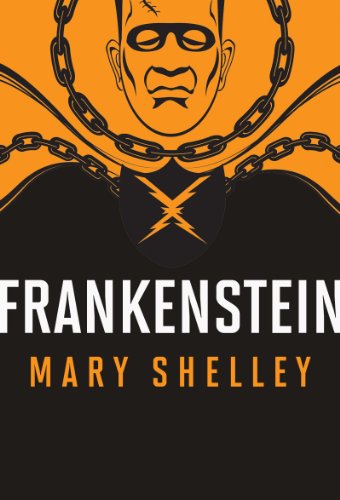
-
Frankenstein
Mary Shelley, Michael He
eBook (, Feb. 27, 2012)• The book includes 10 unique illustrations that are relevant to its content.This best selling classic is about a young Swiss student who uncovers the secret of animating lifeless matter and, by assembling body parts, creates a monster that vows revenge on his creator after being rejected from society.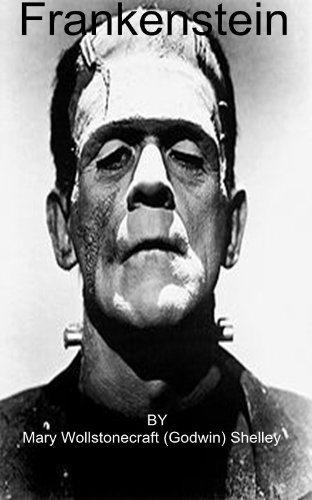
-
Frankenstein:
Mary Shelley
eBook (, May 1, 2016)This eBook, with an active table of contentsFrankenstein; or, The Modern Prometheus is the original 1818 'Uncensored' Edition of Frankenstein as first published anonymously in 1818. This original version is much more true to the spirit of the author's original intentions than the heavily revised 1831 edition, edited by Shelley, in part, because of pressure to make the story more conservative. Many scholars prefer the 1818 text to the more common 1831 edition.Frankenstein; or, The Modern Prometheus is a novel written by Mary Shelley about a creature produced by an unorthodox scientific experiment. Shelley started writing the story when she was nineteen, and the novel was published when she was twenty-one. The first edition was published anonymously in London in 1818. Shelley's name appears on the second edition, published in France in 1823.Shelley had travelled in the region of Geneva, where much of the story takes place, and the topics of galvanism and other similar occult ideas were themes of conversation among her companions, particularly her future husband, Percy Shelley. The storyline emerged from a dream. Mary, Percy, Lord Byron, and John Polidori decided to have a competition to see who could write the best horror story. After thinking for weeks about what her possible storyline could be, Shelley dreamt about a scientist who created life and was horrified by what he had made. She then wrote Frankenstein.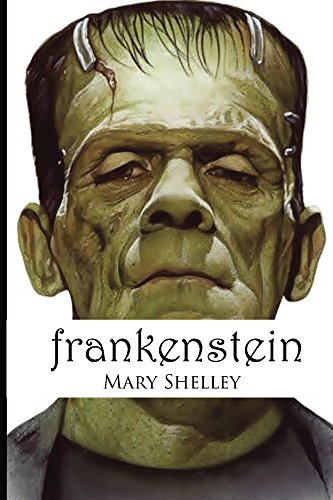 Z+
Z+
-
Frankenstein
Mary Shelley, David Pinching
eBook (Macmillan Collector's Library, Jan. 26, 2017)One of BBC's 100 Novels That Shaped our World.Frankenstein is the most famous novel by Mary Shelley: a dark parable of science misused. Part of the Macmillan Collector’s Library; a series of stunning, clothbound, pocket sized classics with gold foiled edges and ribbon markers. These beautiful books make perfect gifts or a treat for any book lover. The novel is presented here in its original form and with an afterword by David Pinching.Victor Frankenstein, a brilliant but wayward scientist, builds a human from dead flesh. Horrified at what he has done, he abandons his creation. The hideous creature learns language and becomes civilized but society rejects him. Spurned, he seeks vengeance on his creator. So begins a cycle of destruction, with Frankenstein and his 'monster' pursuing each other to the extremes of nature until all vestiges of their humanity are lost. In 1831, Mary Shelley succumbed to conservative pressures and toned down elements of the work.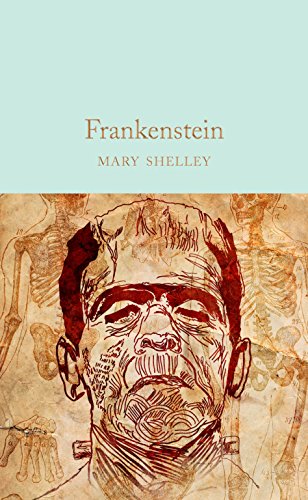
-
Frankenstein
Mary Wollstonecraft Shelley
Paperback (CreateSpace Independent Publishing Platform, Dec. 22, 2016)Frankenstein by Mary Wollstonecraft Shelley. Worldwide literature classic, among top 100 literary novels of all time. A must read for everybody, a book that will keep saying what it has to say for years.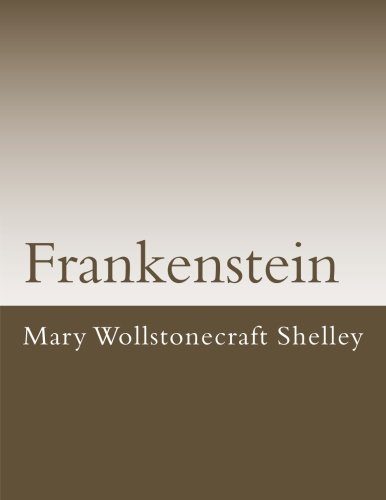
-
Frankenstein
Mary Shelley, Will Jonson
Paperback (CreateSpace Independent Publishing Platform, Aug. 7, 2014)A terrifying vision of scientific progress without moral limits, Mary Shelley's Frankenstein leads the reader on an unsettling journey from the sublime beauty of the Swiss alps to the desolate waste of the arctic circle. Obsessed with the idea of creating life itself, Victor Frankenstein plunders graveyards for the material with which to fashion a new being, shocking his creation to life with electricity. But this botched creature, rejected by its creator and denied human companionship, sets out to destroy Frankenstein and all that he holds dear. Mary Shelley's chilling gothic tale was conceived when she was only eighteen, living with her lover Percy Shelley near Lord Byron's villa on Lake Geneva. It would become the world's most famous work of Gothic horror, and Frankenstein's monster an instantly-recognisable symbol of the limits of human creativity. Check out our other books at www.dogstailbooks.co.uk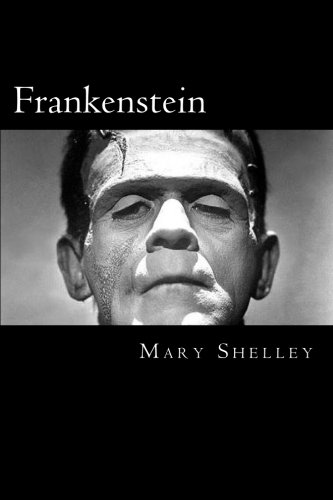 Z+
Z+
-
Frankenstein
Mary Shelley, Gildart Jackson
Audio CD (Dreamscape Media, Aug. 4, 2015)Eager science student Victor Frankenstein uses body parts of the dead to bring a creature to life. Although initially excited that his experiment is a success, Frankenstein becomes horrified at the grotesque being that stands before him and flees. Angered by the rejection, The Monster retaliates by taking the lives of those dearest to Frankenstein. The decision to play God torments both Frankenstein and The Monster he created until the end of their days.
-
Frankenstein
Mary Shelley, ICU Publishing
eBook (ICU Publishing, Feb. 1, 2011)Frankenstein; or, The Modern Prometheus is a novel written by Mary Shelley. Shelley started writing the story when she was eighteen and the novel was published when she was nineteen. The first edition was published anonymously in London in 1818. Shelley's name appears on the second edition, published in France.Through research it can be determined the many influences the author was under during the creation of the novel. She had traveled the region in which the story takes place, and the topics of galvanism and such other occult ideas were themes of conversation among her companions. Frankenstein is infused with some elements of the Gothic novel and the Romantic Movement, and is also considered to be one of the earliest examples of science fiction. It was also a warning against the expansion of modern man in the Industrial Revolution, alluded to in the novel's subtitle, The Modern Prometheus. The story has had an influence across literature and popular culture and spawned a complete genre of horror stories and films.The book includes illustrations, a navigable/active table of contents, and a Free audiobook link for download (which can be downloaded using a PC/Mac) at the end of the book.
-
Frankenstein, or the Modern Prometheus: Color Illustrated, Formatted for E-Readers
Mary Shelley, HMDS printing press, Leonardo
eBook (HMDS printing press, July 26, 2015)How is this book unique? Formatted for E-Readers, Unabridged & Original version. You will find it much more comfortable to read on your device/app. Easy on your eyes.Includes: 15 Colored Illustrations and BiographyFrankenstein; or, The Modern Prometheus, is a novel written by English author Mary Shelley about the young student of science Victor Frankenstein, who creates a grotesque but sapient creature in an unorthodox scientific experiment. Shelley started writing the story when she was eighteen, and the novel was published when she was twenty. The first edition was published anonymously in London in 1818. Shelley's name appears on the second edition, published in France in 1823.Shelley had travelled through Europe in 1814, journeying along the river Rhine in Germany with a stop in Gernsheim which is just 17 km (10 mi) away from Frankenstein Castle, where, two centuries before, an alchemist was engaged in experiments. Later, she travelled in the region of Geneva (Switzerland)—where much of the story takes place—and the topics of galvanism and other similar occult ideas were themes of conversation among her companions, particularly her lover and future husband, Percy Shelley. Mary, Percy, Lord Byron, and John Polidori decided to have a competition to see who could write the best horror story. After thinking for days, Shelley dreamt about a scientist who created life and was horrified by what he had made; her dream later evolved into the story within the novel.Frankenstein is infused with elements of the Gothic novel and the Romantic movement and is also considered to be one of the earliest examples of science fiction. Brian Aldiss has argued that it should be considered the first true science fiction story, because unlike in previous stories with fantastical elements resembling those of later science fiction, the central character "makes a deliberate decision" and "turns to modern experiments in the laboratory" to achieve fantastic results. It has had a considerable influence across literature and popular culture and spawned a complete genre of horror stories, films, and plays.Since publication of the novel, the name "Frankenstein" is often used to refer to the monster itself, as is done in the stage adaptation by Peggy Webling. This usage is sometimes considered erroneous, but usage commentators regard the monster sense of "Frankenstein" as well-established and an acceptable usage.] In the novel, the monster is identified via words such as "creature", "monster", "fiend", "wretch", "vile insect", "demon", "being", and "it". Speaking to Victor Frankenstein, the monster refers to himself as "the Adam of your labours", and elsewhere as someone who "would have" been "your Adam", but is instead "your fallen angel."